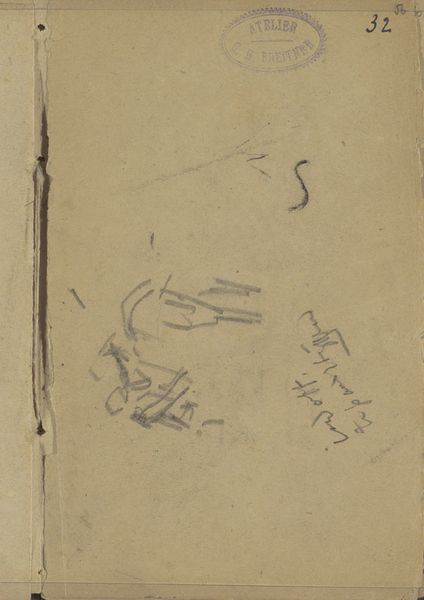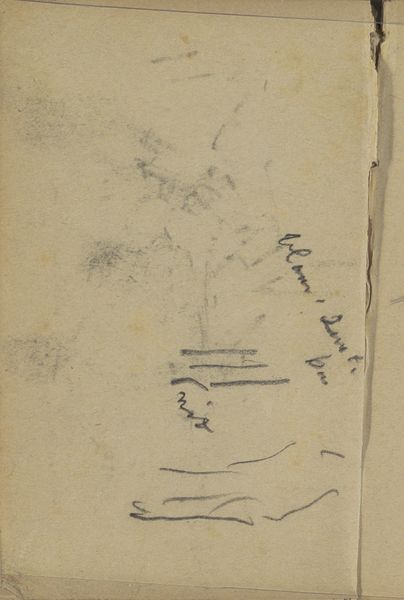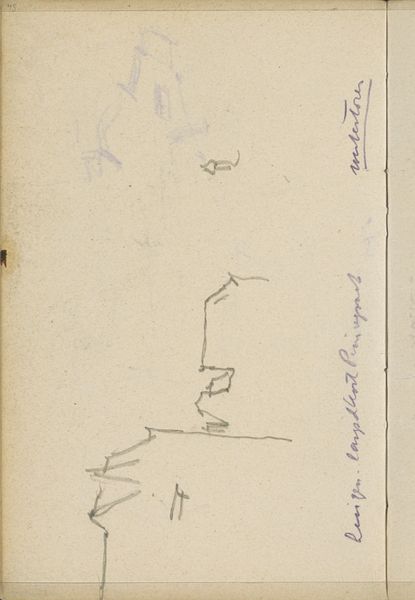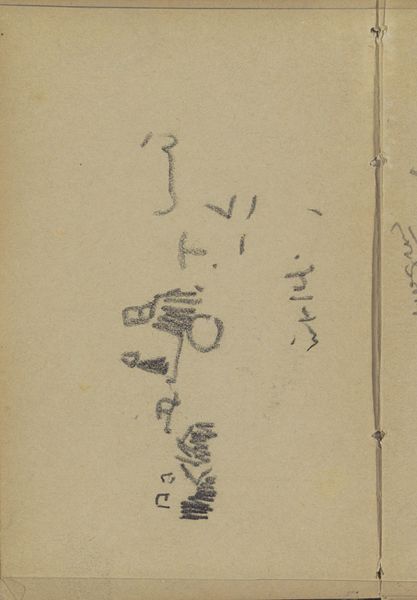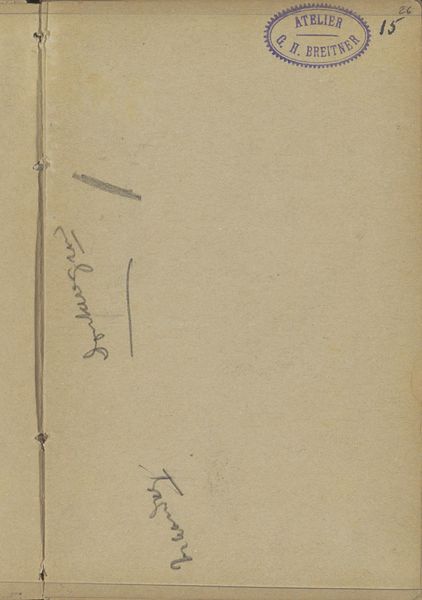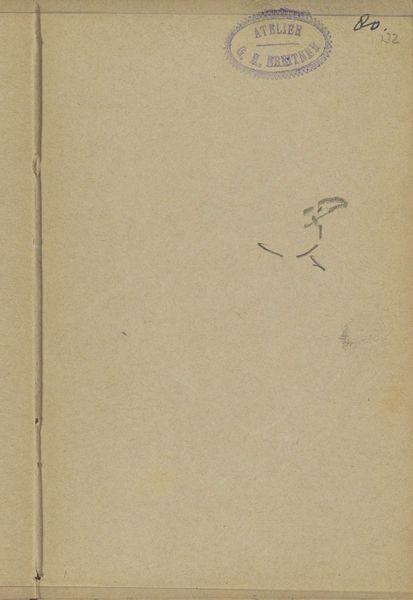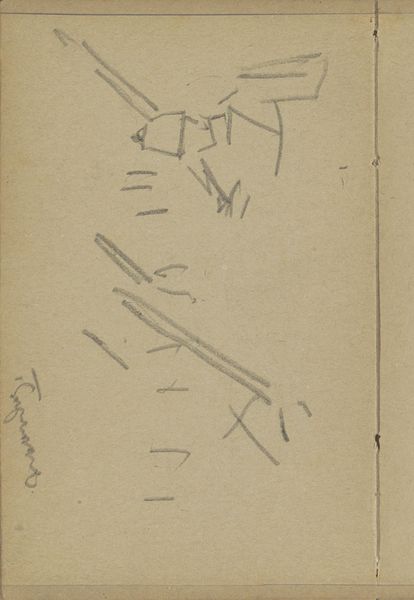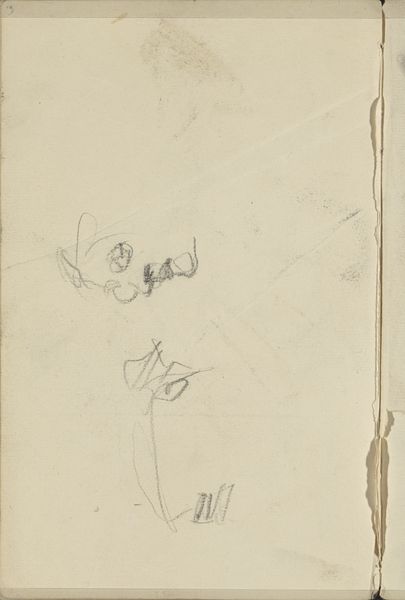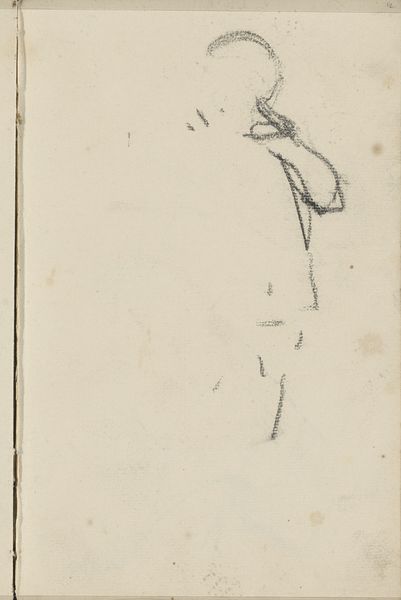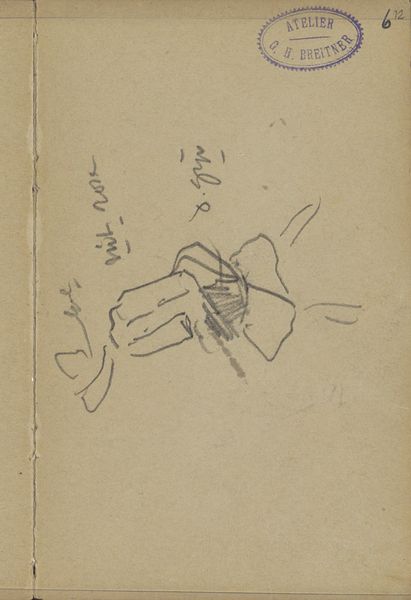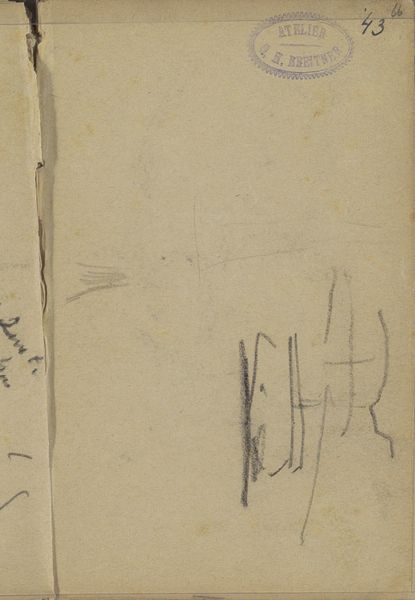
drawing, paper, pencil
#
drawing
#
aged paper
#
toned paper
#
impressionism
#
sketch book
#
hand drawn type
#
landscape
#
figuration
#
paper
#
personal sketchbook
#
idea generation sketch
#
sketchwork
#
pencil
#
horse
#
sketchbook drawing
#
storyboard and sketchbook work
#
sketchbook art
Copyright: Rijks Museum: Open Domain
Editor: Here we have "Paard," a pencil drawing of a horse by George Hendrik Breitner, dating from 1887 to 1891. It’s a quick sketch on toned paper, giving it a raw, almost urgent feel. What do you see in this piece beyond the obvious subject matter? Curator: What I see here is Breitner grappling with the rapid industrialization of Amsterdam and its impact on urban life. Consider the horse not simply as an animal, but as a symbol of labor, of transit, increasingly displaced by new technologies. Does the hurried nature of the sketch reflect the anxieties of a society in transition, a world moving too fast? Editor: That’s a powerful interpretation! The speed of the sketch does mirror that sense of urgency. But are we reading too much into a simple study of an animal? Curator: Not necessarily. Breitner was deeply invested in documenting the everyday lives of working-class people in Amsterdam. The horse, in this context, isn’t just any animal; it represents the working class, burdened by the weight of societal expectations, much like those who toiled in factories or on the streets. The sketch might also speak to gendered labor – who is riding this horse, and what does that imply about the control of labor? Editor: I never considered that. So you are situating this drawing within a larger discourse about labor, class, and even gender dynamics of the time? Curator: Precisely. By examining the social and economic conditions that shaped Breitner’s artistic practice, we gain a deeper appreciation of the artwork’s significance. It's about seeing how societal power structures influence what is considered worthy of artistic representation. It makes you wonder, who's story is he telling here, and whose is being left out? Editor: That's given me so much to think about. I’ll never look at a horse the same way again. Thanks for broadening my perspective. Curator: And thank you for raising thoughtful questions. It is in questioning the surface that we uncover the deeper currents of art history.
Comments
No comments
Be the first to comment and join the conversation on the ultimate creative platform.
